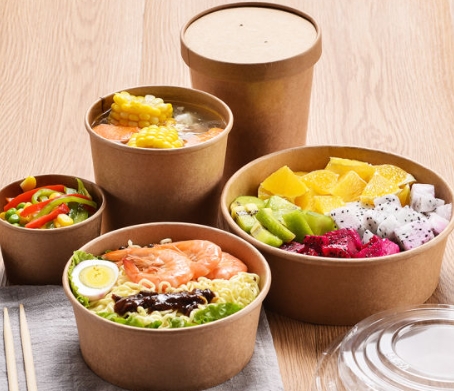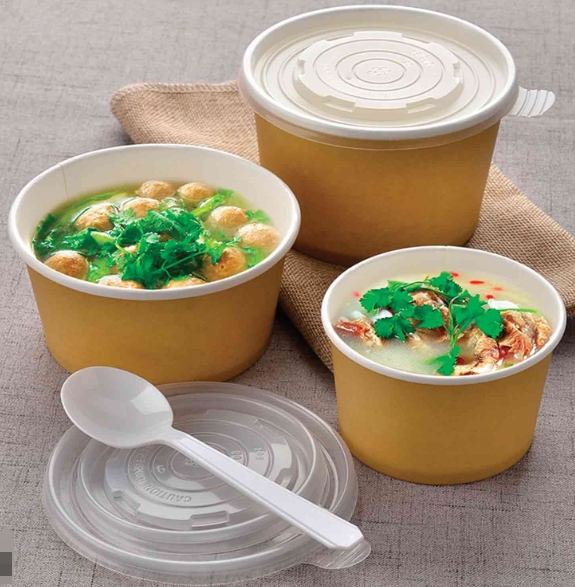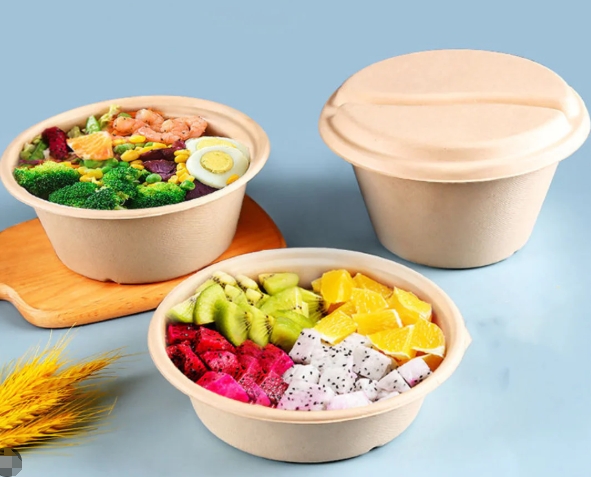
Content Menu
● Understanding Plant Fiber Bowls and Lids
● Key Evaluation Criteria
>> Material Source and Composition
>> Manufacturing Process
>> Physical Properties
>> Functional Performance
>> Safety and Compliance
>> Environmental Impact
● Practical Steps for Quality Assessment
>> 1. Inspect the Packaging
>> 2. Examine the Product
>> 3. Perform Functional Tests
>> 4. Assess Fit and Usability
>> 5. Research the Brand
● Common Pitfalls and How to Avoid Them
● Conclusion
● FAQ
>> 1. What are the main benefits of using plant fiber bowls and lids?
>> 2. How can I tell if a plant fiber bowl is truly compostable?
>> 3. Are plant fiber bowls and lids safe for hot foods?
>> 4. Can I microwave plant fiber bowls and lids?
>> 5. What should I do if the lid does not fit securely on the bowl?
As the world moves towards sustainable solutions, plant fiber bowls and lids have become a popular alternative to traditional plastic and foam food containers. These products, made from renewable resources such as sugarcane bagasse, bamboo, and wheat straw, offer an eco-friendly way to serve, store, and transport food. However, not all plant fiber products are created equal. Evaluating their quality is essential for consumers, foodservice businesses, and anyone committed to environmental responsibility.
This comprehensive guide explores every aspect of quality assessment for plant fiber bowl and lid products. We will discuss the importance of raw materials, examine manufacturing processes, analyze physical and functional properties, review safety and compliance issues, and consider environmental impacts. By the end, you will be equipped with the knowledge to confidently select high-quality plant fiber products that meet your needs and values.

Understanding Plant Fiber Bowls and Lids
Plant fiber bowls and lids are biodegradable and compostable alternatives to conventional food packaging. They are produced from plant-based materials that are processed into pulp, molded into specific shapes, and then dried and finished. The most common plant fibers used include:
- Sugarcane Bagasse: The fibrous residue left after extracting juice from sugarcane.
- Bamboo: A fast-growing, renewable grass known for its strength and flexibility.
- Wheat Straw: The stalks left behind after harvesting wheat grains.
- Other Agricultural Byproducts: Such as corn stalks and rice husks.
These materials are chosen for their renewability, abundance, and ability to decompose naturally, making them an excellent choice for environmentally conscious consumers.
Key Evaluation Criteria
Material Source and Composition
The foundation of any plant fiber product lies in its raw materials. High-quality bowls and lids should be made from pure, uncontaminated plant fibers. When evaluating the material source and composition, consider the following:
- Purity of Fiber: The best products use fibers with minimal additives or fillers. Impurities can weaken the structure and negatively affect biodegradability.
- Type of Plant Fiber: Some fibers, such as bamboo and sugarcane, are naturally stronger and more durable than others. Understanding the source helps predict performance.
- Certifications: Look for documentation or labels indicating the use of certified organic or sustainably sourced materials.
Manufacturing Process
The manufacturing process significantly impacts the quality of plant fiber bowls and lids. Key aspects to consider include:
- Pulping Process: Mechanical and chemical pulping methods can affect fiber length and strength. Longer fibers generally yield sturdier products.
- Molding and Drying: Uniform molding ensures consistent thickness and shape, while proper drying prevents warping and brittleness.
- Surface Treatment: Some products are coated with biodegradable barriers to enhance water and oil resistance. Ensure these coatings are safe and do not compromise compostability.
Physical Properties
Physical characteristics are essential indicators of quality. When assessing plant fiber bowls and lids, consider:
- Strength and Rigidity: The product should withstand pressure without bending or collapsing, especially when filled with food.
- Thickness and Weight: Uniform thickness ensures even strength. Products that are too thin may break easily, while those that are too thick can be unnecessarily bulky.
- Smoothness and Finish: A smooth, well-finished surface indicates careful manufacturing and reduces the risk of splinters or rough edges.
- Fit of Lids: Lids should fit snugly onto bowls, preventing spills and maintaining food freshness.
Functional Performance
A quality plant fiber bowl and lid must perform well in real-world use. Assess the following:
- Temperature Resistance: The product should handle both hot and cold foods without deforming or leaching substances.
- Leak and Grease Resistance: Effective barriers prevent liquids and oils from soaking through, preserving food integrity and preventing mess.
- Microwave and Freezer Compatibility: Many plant fiber products are microwave-safe and can be used for reheating. Freezer compatibility is also a plus for storage.
- Stackability: Bowls and lids should stack neatly for efficient storage and transport.
Safety and Compliance
Safety is paramount, especially for food-contact items. High-quality plant fiber bowls and lids should:
- Be Free of Harmful Chemicals: Avoid products containing PFAS, BPA, or other toxic substances.
- Meet Food Safety Standards: Compliance with local and international food safety regulations ensures consumer protection.
- Be Allergen-Free: Some products may contain traces of gluten or other allergens, so check labeling if this is a concern.
Environmental Impact
One of the main reasons for choosing plant fiber products is their environmental benefit. Evaluate:
- Biodegradability and Compostability: True plant fiber products break down naturally in composting environments, returning nutrients to the soil.
- Certifications: Look for compostability certifications from recognized organizations.
- Sustainable Sourcing: Responsible sourcing practices minimize environmental harm and support local communities.

Practical Steps for Quality Assessment
To evaluate plant fiber bowl and lid products effectively, follow these steps:
1. Inspect the Packaging
Start by reading the product packaging. Look for clear labeling regarding material source, certifications, and intended use. Trustworthy brands provide transparent information about their products.
2. Examine the Product
Take a close look at the bowls and lids:
- Check for uniform color and texture.
- Feel the weight and rigidity.
- Inspect the edges for smoothness and absence of splinters.
3. Perform Functional Tests
Put the products to the test:
- Fill with hot and cold foods to check for deformation.
- Pour liquids and oily foods to assess leak resistance.
- Try microwaving and freezing if the packaging claims compatibility.
4. Assess Fit and Usability
Test how well the lids fit on the bowls. They should snap on securely without being too tight or loose. Stack several bowls and lids to check for efficient storage.
5. Research the Brand
Investigate the manufacturer's reputation. Brands with positive reviews and a history of compliance with environmental and safety standards are more likely to offer quality products.
Common Pitfalls and How to Avoid Them
While plant fiber bowls and lids offer many benefits, not all products are created equal. Watch out for these common issues:
- Misleading Claims: Some products are labeled as compostable or biodegradable but contain non-compostable additives. Always verify certifications.
- Poor Fit: Lids that do not fit properly can lead to spills and wasted food.
- Weak Structure: Products made with low-quality fibers or excessive fillers may collapse under weight or leak.
- Chemical Contamination: Avoid items with chemical coatings that may not be food-safe or could hinder compostability.
- Lack of Transparency: If a manufacturer does not provide clear information about materials or certifications, proceed with caution.
Conclusion
Evaluating the quality of plant fiber bowl and lid products requires a holistic approach. By considering the source and purity of materials, manufacturing methods, physical and functional properties, safety standards, and environmental impact, you can confidently select products that are both effective and sustainable. As demand for eco-friendly food packaging grows, being an informed consumer helps drive the market toward higher standards and genuine environmental stewardship.

FAQ
1. What are the main benefits of using plant fiber bowls and lids?
Plant fiber bowls and lids are environmentally friendly, biodegradable, and compostable. They reduce reliance on plastics, help decrease landfill waste, and are typically made from renewable resources.
2. How can I tell if a plant fiber bowl is truly compostable?
Look for third-party certifications from recognized organizations. Genuine compostable products will break down in commercial or home composting environments without leaving harmful residues.
3. Are plant fiber bowls and lids safe for hot foods?
Most high-quality plant fiber products are designed to withstand hot foods. Always check the packaging for temperature guidelines and perform a test with hot liquids before regular use.
4. Can I microwave plant fiber bowls and lids?
Many plant fiber products are microwave-safe, but it's essential to verify this on the packaging. Avoid microwaving products with plastic or metallic coatings.
5. What should I do if the lid does not fit securely on the bowl?
If the lid does not fit well, try a different brand or size. A secure fit is crucial for preventing spills and maintaining food freshness.

















